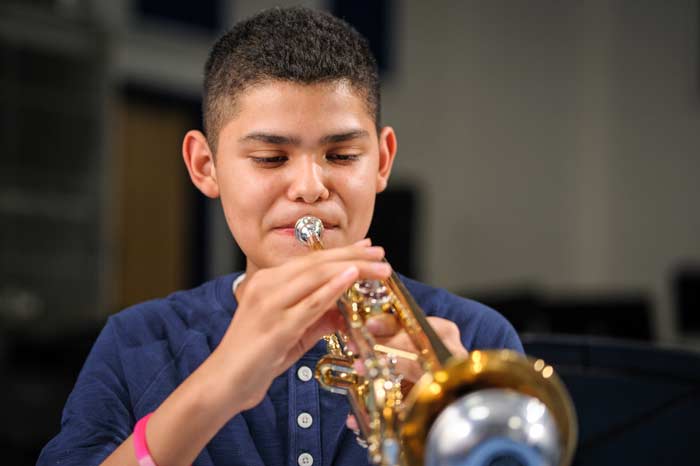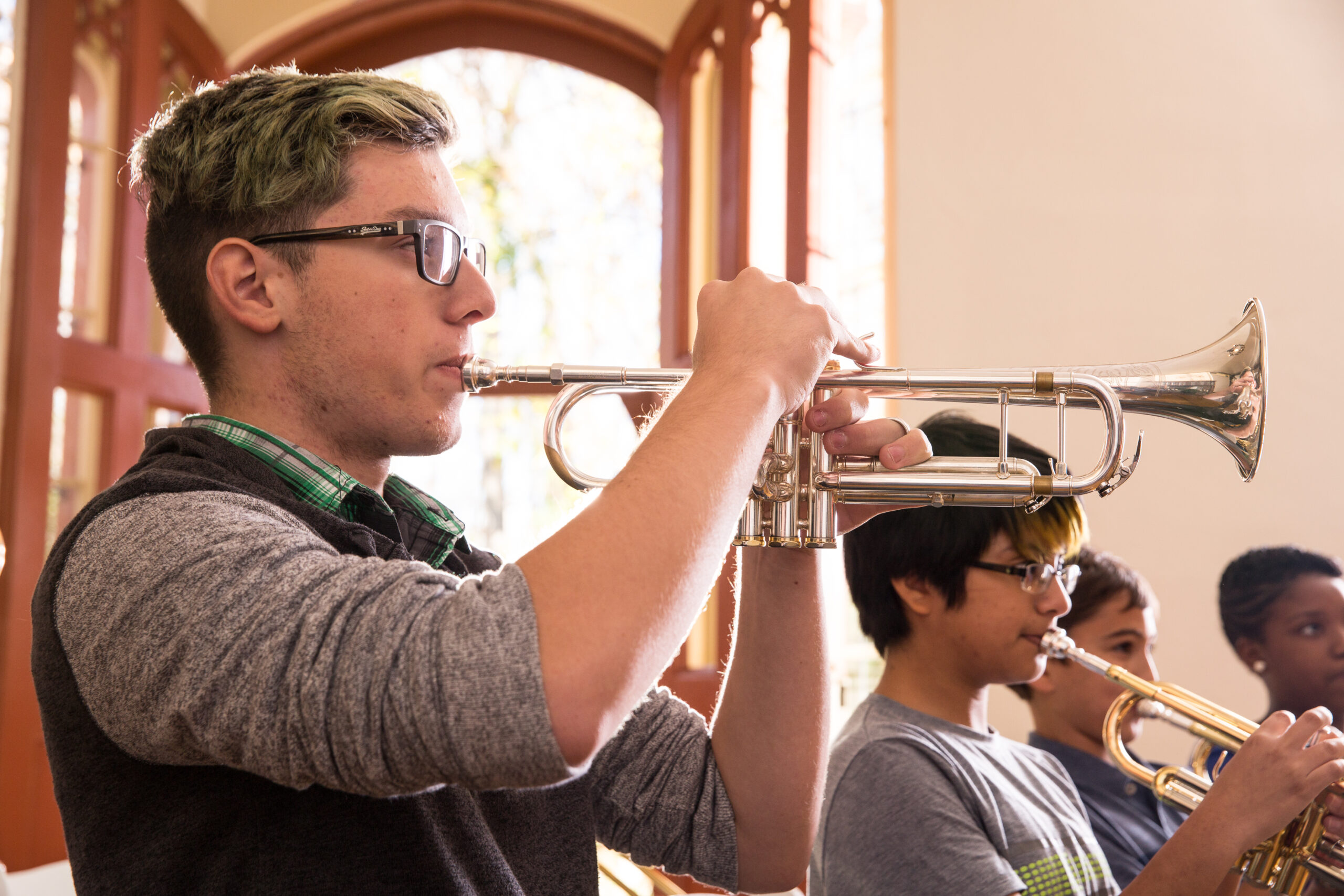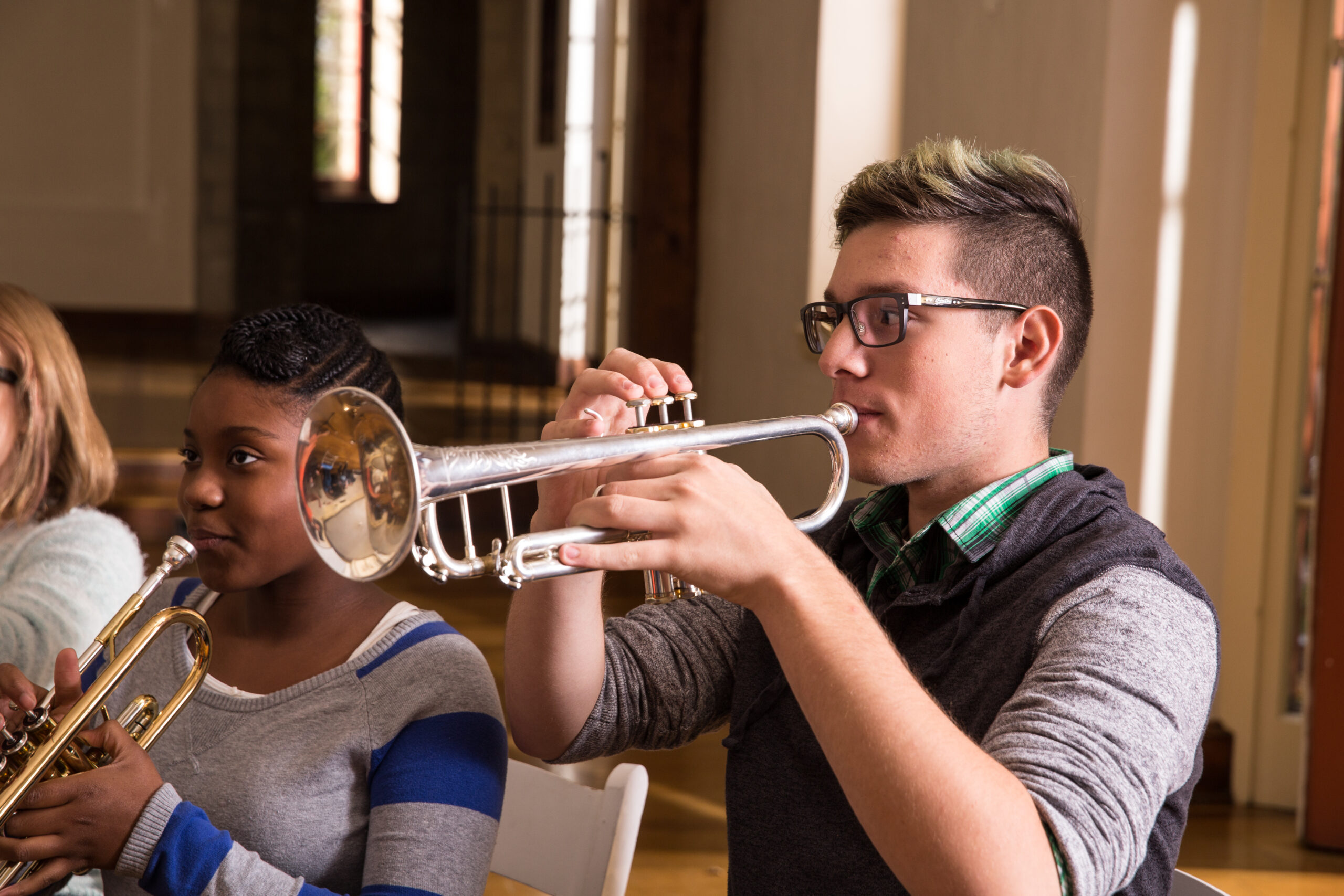July 28, 2015
What’s the Difference Between a Reverse and Non-Reverse Leadpipe Trumpet?


The leadpipe of a trumpet, or the section of tubing that runs from the mouthpiece to the first tuning slide, is usually about eight inches long and has a very distinct purpose: to help with control of airflow and accuracy of pitch. The leadpipe tapers very gradually, starting out narrower at the mouthpiece, and allows the trumpet player better control over the air as it is forced through the instrument. There are two variations in leadpipe (reverse leadpipe and standard, non-reverse leadpipe) and the type of leadpipe that works best is usually dependent on the individual preferences of the trumpet player. Some prefer standard leadpipe, some prefer non-reverse leadpipe, and others aren’t quite sure. If you fall into the last category, read on for more information about each.
Reverse Leadpipe
Typically longer than non-reverse leadpipes, a reverse leadpipe slides into the tuning slide so there is no narrowing of the tube by the edge of the slide, just an expansion. The result is slightly less resistance, and an elimination of any air push back at the intersection of the leadpipe and the tuning slide. Players who prefer reverse leadpipes tend to do so for the control over tone and intonation they offer. As mentioned, deciding between the two is purely based on personal preference, so playing with a reverse and non-reverse leadpipe and evaluating the two may be in order. As far as disadvantages go, some trumpet players have noticed that reverse leadpipes cause distortion, especially when they play at high volumes. If you’re accustomed to playing with a non-reverse leadpipe, adjusting to the tone quality of a reverse leadpipe may take some time.
Non-Reverse Leadpipe
Also referred to as standard leadpipe, non-reverse leadpipe is what most student and intermediate trumpet players are accustomed to. Since they’re the standard option, it’s safe to assume that a trumpet has a non-reverse leadpipe configuration unless reverse is indicated. Since the tuning slide fits into the leadpipe on trumpets with non-reverse leadpipes, instead of the other way around, players will notice slightly more resistance when comparing the two. If you’re hoping to be able to tell the difference between reverse and non-reverse leadpipe trumpets by visually examining the instrument, it’s not that easy–especially if you don’t know what you’re looking for. If you have questions about whether your trumpet has a reverse or non-reverse leadpipe configuration, ask your trumpet teacher for advice or head to a qualified repair technician for a consultation.
Which is Better for Me?
Ultimately, choosing between reverse leadpipe and non-reverse leadpipe configurations is purely dependent on you and your own personal preferences. Obviously, you won’t know which you prefer until you try out both, compare them, and make an informed decision. Those who enjoy playing loudly may prefer standard leadpipes, as they don’t cause distortion at the same level as reverse leadpipes do, while those who want better control over tone and intonation would likely prefer reverse leadpipes. Regardless of whether you consider yourself a professional trumpet player or not, it may be time to experiment with the two until you find the configuration that’s right for you. As mentioned before, speak with your trumpet teacher for more advice on non-reverse vs. reverse leadpipes.
Curious about how to take care of your trumpet? Check out Proper Trumpet Maintenance & Care.







